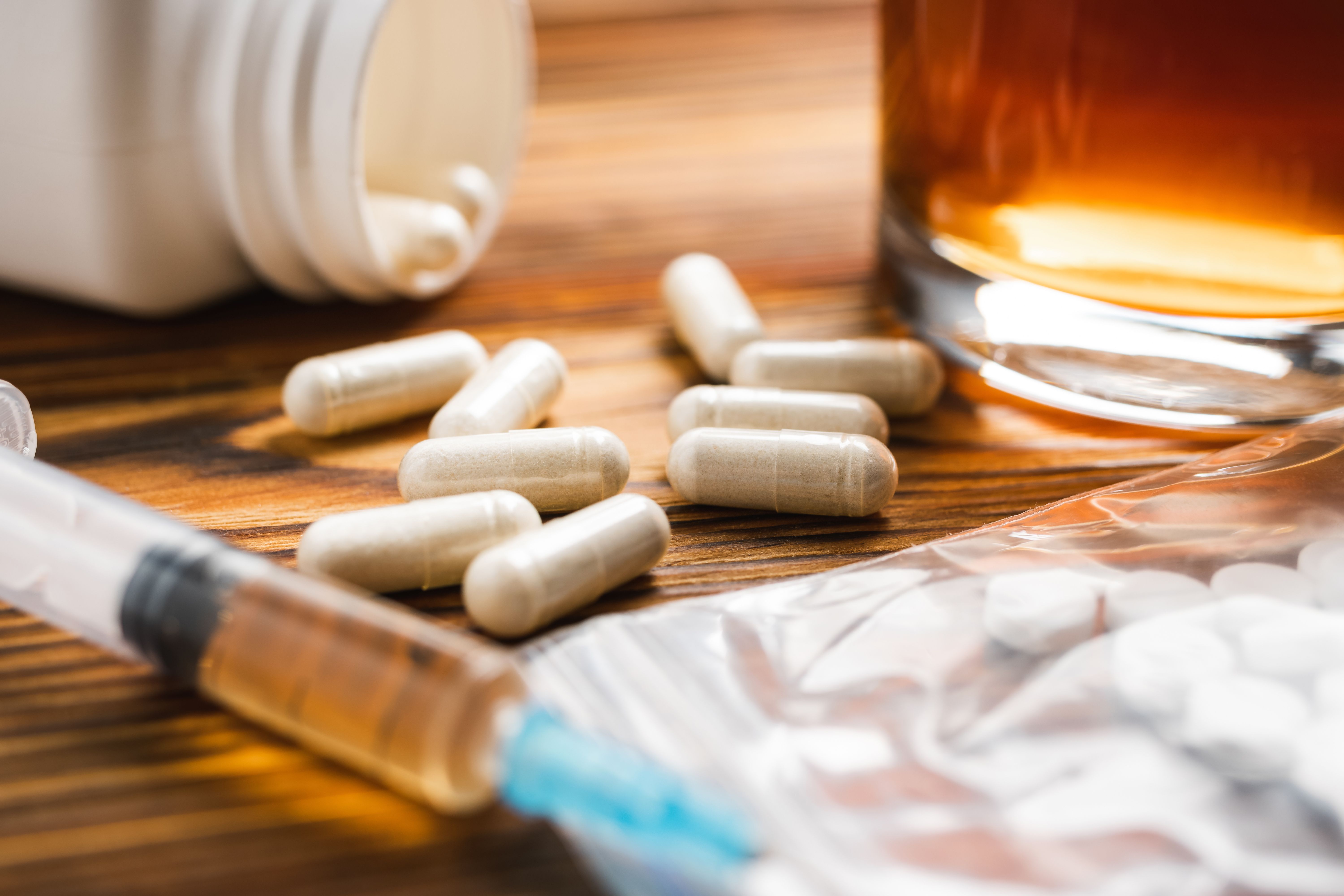Article
From Bath Salts to Spice and Beyond-Elucidating Emerging Drugs of Abuse
Author(s):
Spice, Bath Salts, and Salvia are emerging drugs of abuse, with patients increasingly turning to these agents. Since their legal status varies and they can be difficult to detect on standard drug tests, their popularity may be increasing.
Is your patient using synthetic drugs of abuse? According to Andrew Penn, RN, MS, Spice, Bath Salts, and Salvia are emerging drugs of abuse, with patients increasingly turning to these agents. Since their legal status varies and they can be difficult to detect on standard drug tests, their popularity may be increasing. During his presentation at the 2012 US Psychiatric & Mental Health Congress, Penn elucidated the neuropsychiatric effects of these substances. Moreover, he cautioned attendees about demonizing these agents, as they have shown potential therapeutic effects for numerous psychiatric and medical conditions.
Spice & K2-Cannabinoids
These schedule I drugs are synthetic cannabinoid agents. They affect various regions of the brain, causing such neuropsychiatric effects as increased dopamine, increase serotonin, inhibit gamma-aminobutyric acid (GABA), increase norepinephrine, and inhibit glutamate release. Although these agents get a “bad rap,” they are not all bad, he added. For instance, they have shown advantages by stimulating the hippocampus and increasing appetite and affecting the chemoreceptor trigger zone in the medulla, thus decreasing nausea.
Cannabis has 483 constituent compounds, 66 of which are cannabinoids, with tetrahydrocannabinol (THC) being the most commonly known. However, there are constituent compounds that are not psychoactive, like cannabinol. In addition to medical marijuana, there are several prescription cannabinoids, like nabiximol (not available in the US), rimonabant, and nabilone.
Synthetic cannabinoids like Spice are usually nonpsychoactive dry plant matter coated with synthetic cannabinoid agonists. They are typically smoked and inexpensive, with 2g costing about $20. Two of the more popular and widely available varieties-JWH-018 and HU-210-were developed by researchers attempting to better understand the cannabinoid system. Both JWH-018 and HU-210 are THC mimics, with their effects very similar to THC. JWH-018 is a full agonist at cannabinoid receptor 1 (CB1) and cannabinoid receptor 2 (CB2), while THC is a partial agonist at CB1. JWH-018 can inhibit GABA, cause increased anxiety, agitation, seizure risk, and increase psychosis in vulnerable patients. HU-210 has 100 times tighter binding than THC and has a longer half-life than JWH-018.
Synthetic cannabinoids’ effects can last anywhere from 1 to 6 hours depending on the agent. They are highly potent, so only low doses are needed to cause effects. There have been case reports of psychosis caused from its use; other deleterious effects include paranoia, suicidal ideation, and panic. These agents can cause other adverse events including respiratory issues and tachycardia.
According to Penn, these agents hold a lot of allure for those seeking marijuana-related highs. Since they are synthetic, they are not picked up as THC on drug screens. As such, those on probation, in the military, and others who are regularly drug-tested are drawn to them. According the US Drug Enforcement Administration (DEA), calls to the Poison Control Center due to synthetic cannabinoid use have increased steadily, from 24 calls in January 2010 to 643 calls in June 2011.1 Another study2 found about 8% of college students have used the synthetic cannabinoids, with males more likely than females to have used.
To help minimize the impact of these synthetic substances, the DEA classified synthetic cannabinoids as a schedule I drug. A new law, SB 605-the David Mitchell Rozga Act, is currently being considered and will make many of these synthetic agents illegal. However, Penn cautioned this will inhibit scientific and medical research. In turn, this could result in untoward effects in medicine, since there are possible therapeutic actions associated with these compounds and components. For instance, Penn said there is some evidence that these compounds have anti-anxiety and antidepressant actions. Hu-210 also has shown promise in the treatment of seizures.
Ecstasy, MDMA
Originally synthesized by Merck in 1912 as they were looking for an agent to help stop bleeding, 3,4-methylenedioxymethamphetamine (MDMA) was shelved and largely forgotten until the 1980s with the advent of the rave culture. In 1984, it became a schedule I drug.
Penn noted MDMA is not all bad; since it quiets the amygdala, in conjunction with psychotherapy, it has been shown to help patients with posttraumatic stress disorder.3 In fact, in a phase II study, Mithoefer and colleagues found 83% of patients with PTSD who received MDMA along with the psychotherapy responded to treatment as compared to 25% who received placebo with psychotherapy.4,5 Penn said that beneficial effects were seen three years after treatment. He added that MDMA is currently in negotiation for phase III consideration for this indication.
Bath Salts, Energy, Ivory Wave-Cathinone Stimulants
Synthetic cathinone stimulants are based on the Khat plant from Africa, which has been used for thousands of years. There are about 10 synthetic cathinone stimulants. Mephedrone, one synthetic, is very popular in the United Kingdom and Maine. People using MDMA and cocaine seem to be drawn to this agent, Penn said. It is associated with feelings of euphoria, increased sex drive, and increased motivation. However, it is also associated with muscle spasms, dizziness, anorexia, confusion, agitation aggression, and palpitations.
These drugs are classified as schedule I and seem to be addictive, with patients developing tolerance and reported use longer than intended. Long-term effects are unknown, as these drugs are relatively new and there is not much data available. Synthetic cathinone has potential therapeutic effects, as it acts like an antidepressant. Indeed, Penn said there is a similar drug to these compounds in the Soviet Union used as an antidepressant.
Withdrawal symptoms include nasal congestion, fatigue, and insomnia. Caution should be used with agitation and restraints should be avoided, Penn said. It is important to consider cardiac and blood pressure monitoring in patients using these agents. Similarly, creatine phosphokinase, electrolytes, and renal liver screens should also be conducted. Penn noted the synthetic cathinone stimulants usually do not show up on drug tests.
Salvia
Salvia divinorum, which is native to Mexico, is a mint plant used in teas as part of shamanistic rituals. It is available for purchase online and goes by such names as Diviner’s sage, sally-D, purple sticky, and magic mint. Although it has not been scheduled per the DEA, its use is illegal in some states. Of the three active compounds, salvinonin A is probably the most psychoactive. It is very potent, even at such small doses like 200 mcg. It has rapid onset and offset, with effects starting as soon as 30 seconds and usually gone within 10 minutes. Salvia may be a dopamine receptor 2 agonist but has no affinity for serotonin receptor. It is considered a kappa opioid receptor agonist.
Usually obtained as a dried leaf, salvia is typically smoked from a pipe or a bong. Upon observation, users have uncontrollable laughter, often experience falls, and lose the ability to speak clearly. Patients report visual hallucinations, experience of multiple realities, feelings of floating/flying, and/or confusion. Penn said adverse reactions include dizziness, palpitations, and tachycardia. According to one study, 4.4% of college students and 10% of regular drug users reported salvia use within the last year, with use more popular among males than females.6 Moreover, in a study of 500 participants, 4.4% reported persistent (> 24 hours) negative effects (most often anxiety) while 25.8% reported persistent positive effects.7
Much like synthetic cannabinoids and MDMA, salvia is not usually detectable by standard drug screens. Penn said there is a laboratory that can detect salvia via blood or urine, but the panel can only detect such within 1.5 hours of use, making it virtually useless.
Like the other agents mentioned, salvia has shown potential therapeutic uses. Various studies and reports have shown that it has anti-inflammatory and analgesic effects in rodents with colitis, and it may be helpful in treating cocaine dependence.
Clinical Conclusions
Take everything in context, Penn told attendees, as these agents of abuse can have deleterious effects but may also hold promise as therapeutic agents. He reminded attendees to keep an open dialogue between patients, as sometimes harm reduction is the best you can do for them. Remind patients that just because a substance is legal, it does not mean it is safe, he said. Finally, keep yourself educated, he added. He shared EROWID’s website http://www.erowid.org/ as a responsible source for further information.
References:
References
1.
US Drug Enforcement Administration. National Forensic Laboratory Information System Special Report: Synthetic Cannabinoids and Synthetic Cathinones Reported in NFLIS, 2009-2010. September 2011.
www.deadiversion.usdoj.gov/nflis/2010rx_synth.pdf
. Accessed November 16, 2012.
2.
Hu X, Primack BA, Barnett TE, Cook RL. College students and use of K2: an emerging drug of abuse in young persons.
Subst Abuse Treat Prev Policy.
2011;6:16.
3.
Bedi G, Phan KL, Angstadt M, de Wit H. Effects of MDMA on sociability and neural response to social threat and social reward.
Psychopharmacology (Berl).
2009;207:73-83.
4.
Mithoefer MC, Wagner MT, Mithoefer AT, Jerome L, Doblin R. The safety and efficacy of {+/-}3,4-methylenedioxymethamphetamine-assisted psychotherapy in subjects with chronic, treatment-resistant posttraumatic stress disorder: the first randomized controlled pilot study.
J Psychopharmacol
. 2011;25:439-435.
5.
MAPS. Treating PTSD with MDMA-Assisted Psychotherapy. www.mdmaptsd.org/. Accessed November 16, 2012.
6.
Lange JE, Reed MB, Croff JM, Clapp JD. College student use of Salvia divinorum.
Drug Alcohol Depend
. 2008;94:263-236.
7.
Baggott M, Erowid E, Erowid F. A Survey of Salvia divinorum Users.
Erowid Extracts
. 2004;6:12-14.





